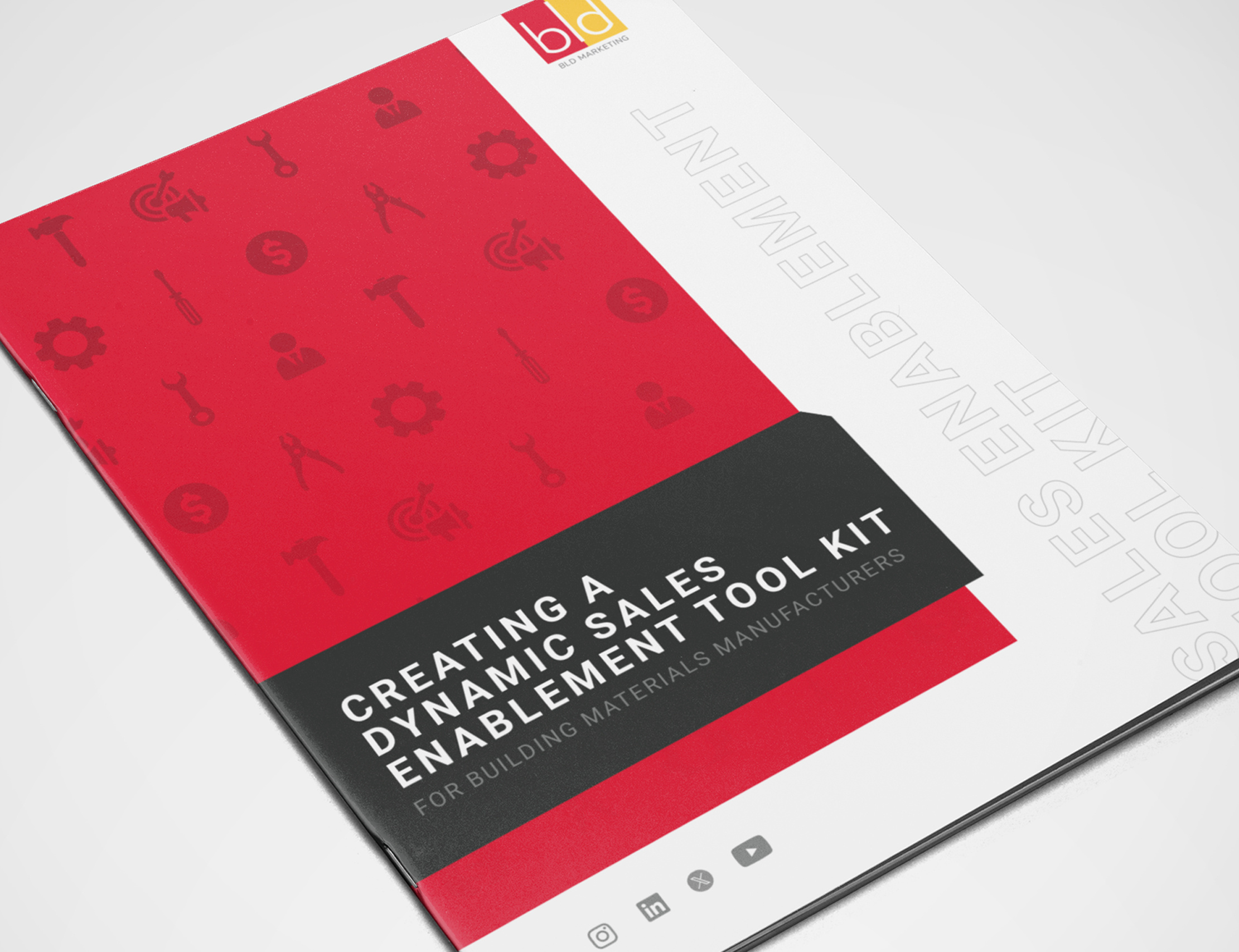Empowering Sales, Driving Results
As a building materials manufacturer, you know the keys to success include ongoing product innovation to address your customer’s pain points. They also include constantly listening to your customers so you are primed to adjust to marketplace demand or address your own shortcomings.
Another critical component to building your business is to develop and sustain a strong and consistent sales enablement effort.
By building such a program, you ensure that your message is consistent across the organization – from marketing through to the selling process at both the sales rep and client levels. Successful sales enablement is a dynamic initiative. It is primed to identify gaps in the selling process, particularly as it relates to tools that might be necessary to develop so you are effectively articulating your core message and what differentiates your brand. By drawing sales and marketing together more closely, you can more readily guarantee message consistency and the right kind of activity throughout the sales funnel.
Build a robust sales enablement process, and you will differentiate your brand from the competition by winning more business and developing longer-term, more meaningful relationships with customers.
A Step-By-Step Approach to Win More Business
At BLD Marketing, we deploy a strategic approach to providing sales enablement tools and processes for our clients’ building materials brands. Here is a step-by-step guide:
- Process Mapping Against a Sales Journey
The first step is to conduct a workshop with the sales team. The goal of this session is to map out their sales process as if it were a sales rep/customer journey with discovery. It is important to analyze each step of the journey. - Target Market Assessment
Another workshop to consider with the sales team is a deep dive into the primary target audiences. Who are we targeting? What are their pain points? What resonates with them? What matters to them? - Customer 1:1 Interviews
It is also important to hear from the customer firsthand. Your brand can accomplish this by conducting qualitative interviews with three to five customers for each primary target audience (architects, builders, general contractors). Your team can make this happen with a 30-minute, 1:1 interview. - Assess Current Tools, Gaps, Needs, and Opportunities for Marketing Tools and Support
It is important to analyze every stage of the sales process. The key is to brainstorm how to make that specific stage more impactful. How can we delight and surprise our customers? How might those efforts drive greater brand trust and conversion? - Map Out the Sales Enablement Tool Kit Mix
Based on all of these learnings, the next step is to finalize what the sales enablement tool kit will include and how it should be deployed. At BLD Marketing, we see the sales enablement offerings as part of a vibrant digital marketing ecosystem where all the components (landing pages, downloadable assets, leave behinds, etc.) are interconnected to tell a more compelling story. Download the full story for a list of common components.
- Cohesive Brand Messaging and Design
Embarking on a journey to create a dynamic suite of sales enablement tools should also compel you to ensure both your core messaging and branding are in order. So often, building products marketers create marketing and sales materials in a vacuum without ensuring they flow from your core identity. This often occurs when newer tools are launched while existing tools remain. Consequently, the new tools lack both brand and message cohesion. Ensure the brand messaging and design are consistent and cohesive throughout each component of the sales enablement toolkit.
- The Execution Plan – Priorities, Budget, and Timing
The best ideas and intentions can fall short once it is time to implement them. Avoid this by setting priorities for components of the sales enablement tool kit. Complete what needs to be completed first, then move to the next asset as you work to fulfill the entire suite of tools. A phased approach can help to establish budget and timing expectations.
- Measurement Criteria
Where possible, determine robust measurement criteria in advance of producing the toolkit materials. Set KPIs and an appropriate tracking methods (unique tracking codes, custom URLs, QR codes) for each component of the toolkit. - Sales Team Feedback
As the tools are nearing completion, share them with the sales team for feedback. Ensure sales leadership buys into the tools before they are finalized. - Launching the Program
Merchandising the effort to the sales team and brand company leadership is also important. An internal rollout signals to everyone that a shift has occurred and that the sales team now has a series of carefully crafted, strategic tools at their disposal, all aimed at driving business results. - Monitoring Adoption and Getting Feedback
The sales enablement journey is ongoing. Check in with the sales team to monitor how the toolbox is performing. Be ready to adjust based on feedback.
Fueling the Sales Energy: Ready to Roll?
As with any task at hand, completing it requires you to carefully select the best tools. The same applies with your sales efforts. BLD Marketing has successfully deployed its sales enablement approach for a broad array of clients in the building materials sector.
See how we roll.
DOWNLOAD FULL GUIDE
Let’s talk.
Have a specific marketing challenge? Looking for a new agency?
We’d love to hear from you.
